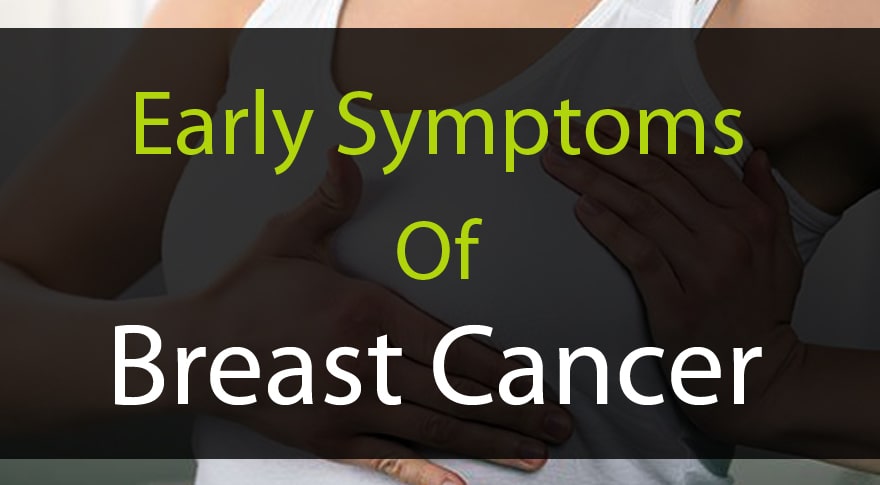Certain changes in your breast may be the warning signs of breast cancer. If you know, how these changes look or feel, you have higher chances of getting the right treatment on time. Like all other types of cancer, breast cancer is formed of unusual cells that grow uncontrollably. The cells may travel further into different body parts. And in that case, the cancer is known as “metastatic”.
Breast cancer either starts from your milk-forming glands. This type of cancer is known as “lobular carcinoma”, or it starts from the ducts that carry milk into the blood, called “ductal carcinoma”.
If not managed properly and timely, the cancer cells may also affect the surrounding lymph nodes or travel to other body parts through the bloodstream. In some rare and very severe cases, cancer may even invade the tissues around your breast and chest wall.
The spread rate may differ from person to person depending on the type of cancer. At times, it takes years to grow beyond your breast, while in some cases, the spread rate is surprisingly quick. Avoiding breast cancer is not very straightforward, but you can reduce the risk or can control it on time if you are aware of early symptoms for breast cancer. The following are some of the prominent early signs of breast cancer. Let’s discuss them one-by-one, and stand together to fight against breast cancer.
1. The thickness on or around your breast(s):
You may notice a clear difference between one area of your breast(s) and the rest. You may feel that it is less “squishy” and “denser”. This can also be noticed while breastfeeding as well as menstruation and is considered as absolutely normal. But, if the thickness doesn’t go after a few days or it gets worse, can be an early sign of breast cancer.
Must Read: Symptoms of Endometriosis
The thickness of the skin is a sign of inflammatory breast cancer with the cancerous cells lying deeper in the breast. The thickening is caused by the blockage of blood circulation in the breast via blood vessels or lymph vessels or the growth of the tumor around the skin surface.
This thickening is different from a hard lump which is formed in a case when cancerous cells grow together.
NOTE:
Prolonged thickness of the skin of the breast(s) can be one of the symptoms of breast cancer at early stage, but should not be confused with the “breast density” which is not a parameter of how a breast feels. And, mammography is the only method of determining breast density.
2. Dimple
An indentation or a dimple in the breast may occur due to a temporary mark from a tight cloth. But if the dimple remains longer than a few hours, it can also be an early sign of breast cancer. The dimple is caused when a deep tumor in the breast pulls the skin inward causing a dimple like an appearance and is not caused due to underwire bra. You may or even may not feel this dimple!
But can easily be noticed while lifting your arms above your head. Notice, if the whole breast skin moves with the movement of your arms.
TIP:
Stand right below a bright light source. It will cast shadows around your breasts and you will be able to notice a dimple if there is any.
3. Nipple Crust
The crust on the nipple can also be one of the very early symptoms of breast cancer. Nipple crust can be seen due to some different skin conditions, and can even be harmless as well. Nipple crust is also one of the signs of Paget’s disease.
In the case of nipple crust due to breast cancer, the cancerous cells keep spreading inside the breast and affect the nipple, forming a scab-like white or red crusted surface that doesn’t go away easily and causes soreness around the affected nipple.
4. Heat
Usually, heat is common in breastfeeding, developing breasts, or in eczema of the breasts. If there is heat and it doesn’t go away even after the administration of antibiotics and other drugs, you should not take it lightly. It can be a strong sign of inflammatory breast cancer.
Inflammatory breast cancer stops the flow of lymph in the affected breast, which causes redness and swelling, at times, even without hardness or lump. In addition to the heat, you may also feel mild to severe burning in or around the breast. The color of the skin may vary from pinkish to reddish-purple. In case if gone unnoticed for a few weeks, the surface may get bruised and can give early signs of breast cancer rash.
5. Unexpected fluid discharge
Discharge from the nipples is very common and is usually harmless. It is very commonly related to the development of breasts, cysts, infections, breastfeeding, and pregnancy, etc. If the fluid releases from the breast(s) without any of these changes, you should not ignore it at all, especially if the discharge contains blood.
6. Soreness around the breast(s)
When the breast cancer reaches the advanced stage(s), it can cause the breakdown of skin surrounding the nipples, and can even form an open wound. If not treated on time, the wound may start leaking fluid with a bad odor. Soreness in the case of breast cancer is more often than not accompanied by the hard lump. And this is more of an advanced stage cancer than early stage symptoms of breast cancer. And you should understand that you are suffering from breast cancer for a quite a while now.
7. Bump
Sometimes, a cancerous lump on the breast surface can be seen. However, bumps even with or without lumps are not always cancerous. A lot of them are formed due to cysts (collection of fluids) and are even harmless too. Having lumpy and/or bumpy breasts is pretty common. However, if you are noticing multiple bumps for so long, you must consult an experienced doctor.
NOTE:
Bump(s) can also be caused due to injury to the breast. And injuries don’t usually convert into cancerous growth until there is an open wound which is ignored for a few months.
8. Sunken Nipple
Retracted nipples are also very normal, and can be a part of normal breast shape. However, if your breasts get flatten, sunken, and turned, you should not discount it as one of the early signs of breast cancer pain. You must start taking it very seriously, especially, if there is inward pulling of the nipple(s).
9. Growing Vein
It is one of the rare symptoms of breast cancer. You should not confuse with newly appearing blood vessels or veins. It is also commonly associated with weight gain, obesity, breastfeeding, and Mondor’s disease. However, if the veins become very pronounced on the breast or around the collarbone, can be a strong sign of cancerous growth.
10. New size or shape
Having two breasts with slightly different size or shape is not something strange. After all, the human body is all about varieties! Breastfeeding is also a factor responsible for changes in the shape or size of the breast(s). If one of the breasts shows constant changes including flattening, swelling, or unexpected drooping, especially if not connected with menstruation, it can be one of the early signs and symptoms of breast cancer.
11. “Orange peel” skin:
When the breasts’ skin resembles the dimpled skin of an orange, it is one of the strongest signs of breast cancer, also known as, “peaud’orange” (“orange peel”). With “peaud’orange”, the breast swells so much that the hair follicles start looking like plenty of dots like those of orange peel. This change may or may not be associated with a change in the color of the skin. “Orange peel” skin is one of the clear signs of inflammatory breast cancer.
12. Hard lump
A deep, hard lump is one of the commonest and early warning signs of breast cancer. It is usually immovable, and feels like a seed of the lemon, and may vary in both shape and size. A breast lump is not easy to feel, even if it is hard. And if you can have breast cancer screening, go for it for correct diagnosis.
Sometimes, lumps are harmless too, especially in the case of fibroadenoma and cysts. But, if the lump is nothing to do with breastfeeding or menstruation, you should take it seriously.
13. Unexplained weight loss
When breast cancer is caused due to the spread of the first (primary) cancer of any other organ, it is called “secondary breast cancer”. Unexplained weight loss accompanies by other symptoms like constant and prolonged fatigue, and nausea among others is the early symptom of secondary breast cancer. Unexpected weight loss can also be noticed in other conditions like HIV infection, prolonged anemia, and other chronic diseases. But, if it is noticed after the cancer of any organ, it should not be taken lightly.
It’s natural to get worried about the growth of cancerous cells. But, if you can keep a track on these early signs and symptoms, you can win the fight against breast cancer. In case, if you notice these symptoms, and cancer is not diagnosing even after numerous investigations, doctors will assess your overall condition and will find the exact cause(s). And proper, timely treatment for any diseases is always a great thing!
References:
https://knowyourlemons.com/symptoms
https://www.webmd.com/breast-cancer/understanding-breast-cancer-basics
https://breastcancernow.org/information-support/support-you/secondary-metastatic-breast-cancer







